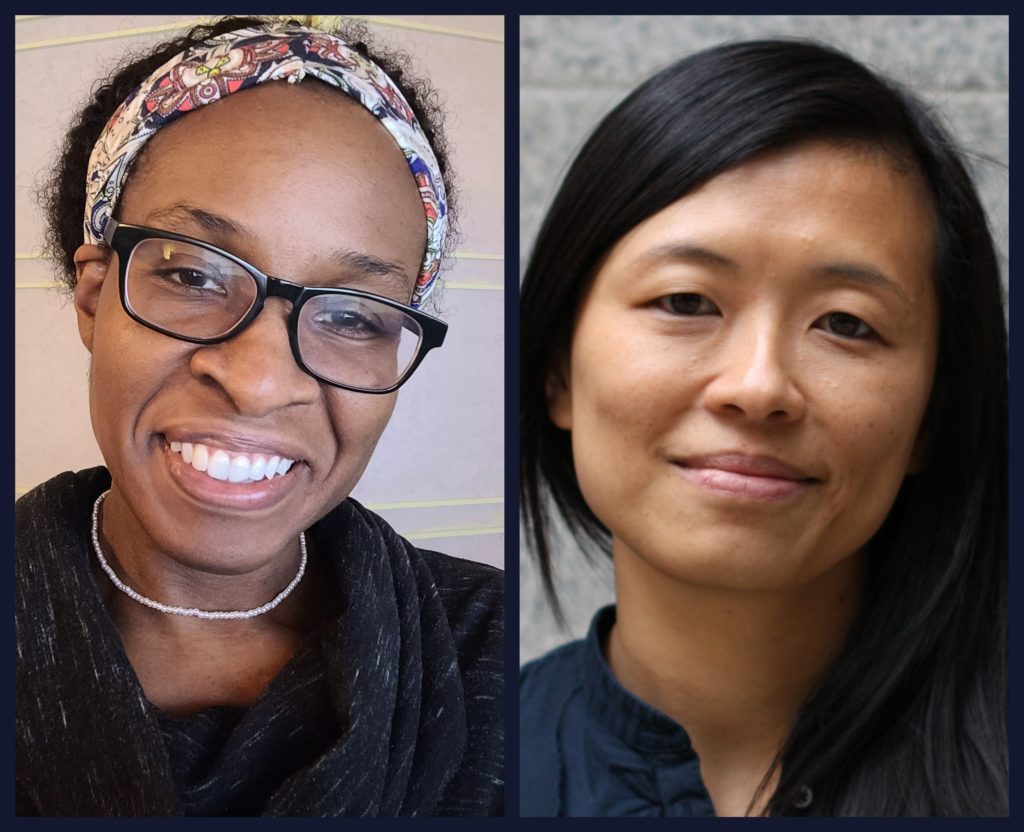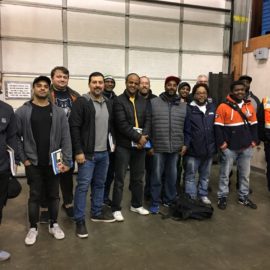
Women’s History Month offers EBP an opportunity to celebrate a few key players helping to bring the principles and practices of “exemplary building” to King County’s affordable housing sector. These women use their unique skills to bring together diverse teams and deliver the strong results that constantly move the needle towards a more equitable and sustainable future for their community. This community. Our community.
We posed the same set of intriguing questions to several of the women and women-led teams associated with EBP. We hope you’re as inspired by their stories and their leadership as we are.

(Photo on left)
Director of Real Estate Development
HomeSight
(Photo on right)
Partner
SKL Architects
How long and in what ways have you been involved with HDC’s Exemplary Buildings Program? What is it about EBP that resonates with you?
[Uche] I’ve been involved with EBP since early 2019. HomeSight is developing a limited equity homeownership cooperative and we had been working with Steve Gelb at Emerald Cities Collaborative on finding funding for PV for the Co-op. Our project was invited to participate as a pilot demonstration project. We were also already participating in ILFI’s affordable Housing Pilot and working toward acquiring petal certification with equity, place and materials. Our goals, which included EUI of less than 20kbtu/sf/yr, fossil free fuel sourced and energy star appliances (with electrical HP dryer, Sanden HP centralized water heater), tighter envelope, low-flow plumbing fixtures, 100% LED lighting, and as much PV as possible on the roof, were in line with EBP’s goal of assisting to create high performance, healthy affordable multi-family buildings. [Gladys] Othello Square Homeownership Building empowers the community to grow wealth and regains the power to thrive in place. We are not only building units but also a more resilient future for the residents. We are grateful to expand this work on the building level with the Exemplary Buildings Program’s help. The program creates an equitable opportunity to build healthy and energy-efficient homes. The funding and assistance enable us to achieve a 45% reduction in net energy consumption and incorporate healthy materials that promote the people and the planet’s well-being. Now more than ever, we need a program that lists resiliency, climate change, health, and affordable housing as priorities. We are very thankful for this program.Why are your specific skills and unique traits necessary and important for this work? How do they come into play in balancing the goals of delivering “exemplary” housing while maintaining affordability?
[Uche] I’ve been at HomeSight for 18 years because I believe in their mission of promoting social and economic equity in diverse communities. I am grateful to have the opportunity to use my project management and relationship building skills in furthering that mission. Working through that lens of equity and its implementation is integral when balancing affordability and delivering exemplary housing. [Gladys] From my background and the study of sustainability and social justice issues, I began to see the intersection of biases with environmental issues and how they disproportionately affect low-income, women, indigenous people, and communities of color. I learned from my background that if you want changes, you have to do something about it. Justice issues require not only more from all of us but requires the system to change. For us to achieve the goals of delivering “exemplary” housing, we need to reset the bar. Then, we can focus on the work to change “practice as usual” to meet this new normal and realize price equity. This work needs all of us to do something about this, and together, we can hit the tipping point to change the status quo.One of EBP’s defining traits is its collaborative model and team-based approach. Tell us a bit about how your team worked together to achieve exemplary building goals: what were the values, individually and collectively, that were most important to success?
[Uche] Keeping the future homeowners at the forefront, who were the beneficiaries was the most important. We started with early engagement and design collaboration with community in order to inform the concept design and then from schematic design, the team, which also included the GC, worked in close partnership to design the project using the most cost-effective healthy materials, systems and strategies within the concept design parameters and the constraints of the project budget. We were able to look at the entire project and problem solve holistically without sacrificing quality or functionality. How could we develop this project in a way that brings long-term value to both the unit owners and the surrounding community was in the forefront. Our goal – to create socially just housing that provides a resilient and regenerative home for all its residents while minimizing the operational and utility costs for the co-op and its residents. [Gladys] Like Uche said.What leadership tool will you take forward from the extraordinary challenges of this past year?
[Uche] Communication that is as open and transparent as possible, especially this past year when things were either paused or delayed. It’s important to keep the entire team in the loop on what is going on and what’s coming down the pike. [Gladys] When we spent a lot of time on virtual interactions, we are becoming more polarized when things tend to be painted as “half-empty”. Both sides at half-empty points will look like opposites. It helps to have asset-based narratives instead of focusing on deficit-based all the time.What would you say to a younger woman who is considering entering the architecture, engineering and construction (AEC) industry? What do you wish you had known prior to entering your profession?
[Uche] Do not be afraid to show and have confidence in your own worth, your knowledge and skills. Try to join a firm or organization that can provide you with a mentor. I was fortunate to start my career at HomeSight, which was a woman-led organization that had both women and POC in leadership positions. My mentor there was a woman of color who guided and encouraged me to know my worth and have confidence in what I brought to the project development table. As a black woman in this industry it is very important that I use my leadership position to encourage and help pave the way for other women of color to enter into the AEC industry. As far as what I wish I had known? I think I’d turn it around and say I’m glad that I understood customer service which was a skill I acquired from my time as a bartender. Having that skill served as a foundation for the relationship building which is also important in this industry. [Gladys] Question status quo in the name of social justice. The built environment is one of many areas that can impact the social determinants of equity. I would have told myself to learn and understand from this broader perspective and then work for a firm that directly impacts the root causes of equity.On a lighter note: What or who has been an empowering song, poem, book, movie, or person for you this past year?
[Uche] Song: Lil Baby – The Bigger Picture. Book: Mediocre – Ijeoma Oluo [Gladys] Book: Pedagogy of the Oppressed, Paulo Freire. Praxis: “Reflection and action directed at the structures to be transformed.”Uche + Gladys are two of the women making an extraordinary contribution to EBP… read more stories of EBP’s women leaders here.


